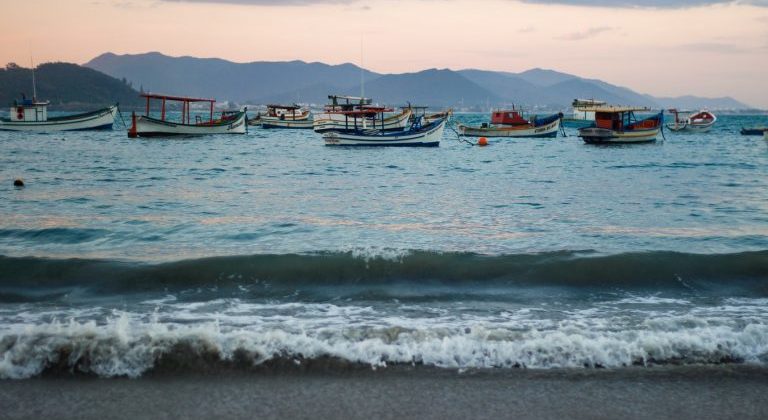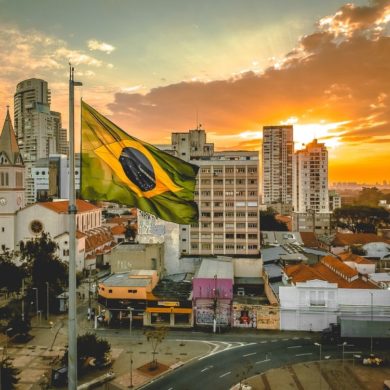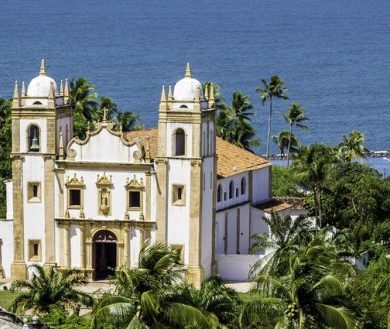Oyster culture is probably not the first thing that comes to mind when you think of Brazil. However, the coasts of the Santa Catarina state are home to one of the best kept secrets of the “Auriverde” country. Around the city of Florianópolis, Brazilian oysters are the pride of the inhabitants of the region. The cold patagonian currents present in the sea make these oysters particularly tasty.
Brazilian oysters are not heavily exported at the moment, but there are hopes for the coastline of Santa Catarina to become a world leading oyster farming area. Florianópolis oysters have the potential to become popular across borders, like Arcachon oysters.

Exceptional oysters
It was at the end of the 1980s that the first oyster beds were created in Florianopolis. At first, this was to help local fishermen whose regular catch was not enough to ensure their survival. To everyone’s surprise, these first beds were a success. Indeed, the cool water temperature is ideal for farming oysters. The indisputable quality of the biodiversity and the waters surrounding the island give the oysters a unique and tasty flavor.
Today, the Crassostrea gigas are considered the best oysters in Brazil. While they could be successfully exported around the world, oysters from Florianopolis remain a well hidden treasure, reserved for those who visit Santa Catarina. The city is still the largest producer of farmed oysters in the country.
To the south, Ribeirão da Ilha is one of the most charming villages on the island. A town where time has stood still, this small and colorful district is a true haven of peace. There are countless oyster farms here where the famous Brazilian oysters are produced. At the water’s edge, traditional restaurants serve this tasty dish. You can also taste shrimp, fish and local crab, freshly caught at the port.

The mangrove oyster
This oyster, called crassostrea gasar, is actually from Senegal and would have been brought in by slave ships at the time. Now, this seafood is found in Guyana and in the state of Pará in Brazil. Since the end of the 1960´s, the municipality of Montsinéry-Tonnégrand, in Guyana, has been active in trying to develop a sustainable oyster culture.
Mangroves are essential for growing these oysters. Indeed, the oysters also protect the mangroves by filtering the water. Clinging to the roots of mangroves, oysters thrive in this exceptional natural environment. Cooperation and legislation have been put in place to protect oysters in northern Brazil and to promote sustainability and marketing. Oysters do not grow in parks like in Europe and in the United States. Here, they are attached to floats which are covered at high tide in water where the salinity is up to 40%. While the oysters from Santa Catarina have attracted more attention until now, those from the Pará region are now highly coveted.

A little secret . . .
It is customary outside Brazil to consume oysters raw with a squeeze of lemon juice, in South America, the oysters are more often eaten grilled or in pie. They are also used in medicine, especially to treat wounds.
A little secret that adds to the magic of our most popular trips; the buggy or 4X4 tour to Jericoacoara. On the way along the beaches between Guajiru and Jericoacoara, a few kilometers after Icaraí de Amontada, there is a small traditional hut at the edge of the river, the Isla Ostra. It is there that Tiago, a passionate young native, offers delicious, small and semi-wild oysters which he harvests and then raises at the foot of this enchanting place in the mangrove of Aracati-Açu. Due to the alternation of water salinity depending on the tides, they develop a subtle and tasty flavor. Surely the best and freshest oysters in all of Northeast Brazil, you can taste them accompanied by a delicious caipirinha served frozen in a hollowed out coconut. Truly a hidden gem!






